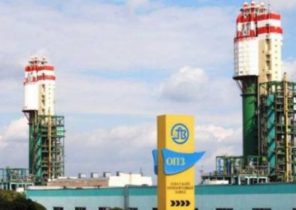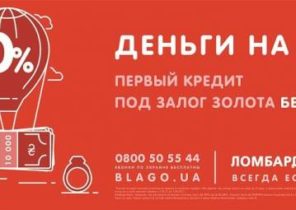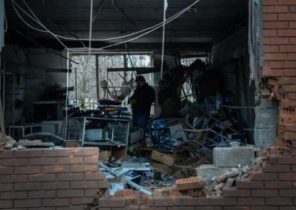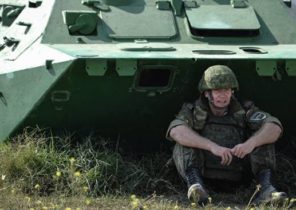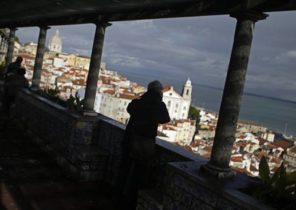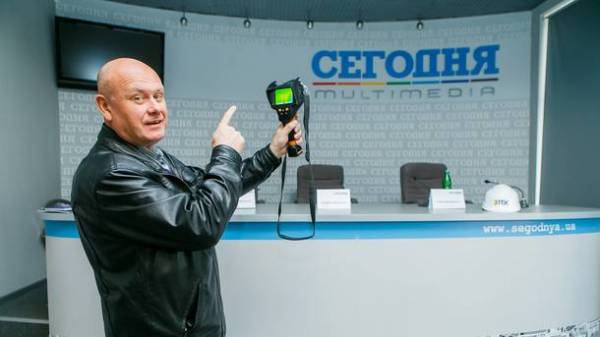
In the press there is much talk about reform in the field of energy efficiency and the need to undertake energy audits to properly to save heat and electricity. The newspaper and website “Today” was one of the first decided to conduct energy inspection of your building.
And not just to hold and to learn how to calculate energy savings and to develop a plan for energy efficiency measures. Therefore, the editorial staff sent for training on the basics of the energy audit, your technician superintendent Alexander Semenenko.
By the way, the training lasts three days. First day – lectures at the Academy of DTEK. Second day – practical training on the real object. And two weeks later – the protection of “homework” is carried out independently of an Express energy audit. The training lead project Manager at energy service company ESCO DTEK Sergey Svistun, behind which more than 500 energy audits of buildings of various types in Ukraine.

So passed the learning theory at the Academy of DTEK. Photo: Anton Kovalishin
For practical tasks selected building version of “Today”. The building is interesting: constructed of cinder block in 1954 by German prisoners, but in 2007, refurbishing and was insulated. However, in some areas it’s still cold and others too hot, especially with the onset of spring. Try to figure out what can be done to greater energy savings and improve comfort of work of journalists.
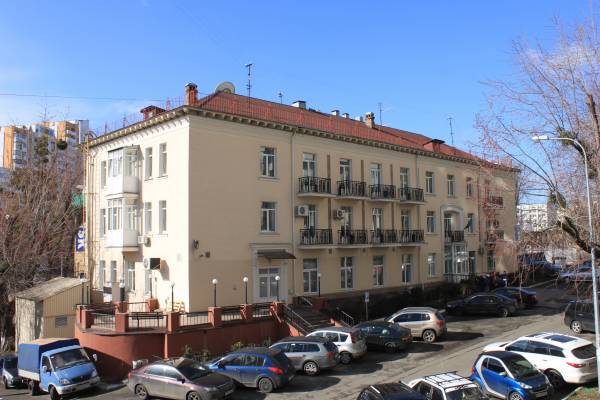
So the editorial office looks like now. And not to say that he has 63 years
To understand the scale of the reconstruction, you can look at photos from the archive. The building looked nice, but abandoned. In Kiev, similar houses still have a lot, but usually they are in decline. Built by the Germans well, thoroughly. Such a house can stand more than 100 years, if the time to carry out repairs and to comply with regulations. This including the answer to the question “what to do with the old housing stock”.

Looks like there is depicted the beginning of repair works
Near object we discussed the plan of action: first, inspect the outside of the house. Then look at the interior, the basement and, if possible, the attic. For external examination used a thermal imaging camera and showed the participants how it works. When you are standing outside the red visible place of heat loss, green and blue – high quality insulated areas. Inside the building the opposite is true: blue is “cold bridges” and heat loss. To use the thermal imager it is necessary with the shady side of the building until the sun heated wall. With the weather that day was lucky, it was 6 degrees despite the sunshine.
Every then he was able to work with the imager. (Photo By Anton Kovalishin)
In General, the warming we liked. Everything is done qualitatively, including the slopes of the Windows, and energy efficient Windows. The thickness of the insulation is 30 mm, it was possible to make and thicker. But the cinder block that makes up the walls, retains heat well. But the cap is usually the weak point of all the buildings it would cost to insulate. Through the cap the heat from the basement or first floor may go into the ground. To insulate the basement need to the depth of soil freezing – 1 meter.

Note the window to the left of the imager and an open balcony on top. Photo: Danil Pavlov
But an open window – a sign that in some areas too hot. The people inside nothing remains but to issue securities of Giga-calorie out. Why is this happening and what to do – we will see next. Another tool that energy auditors use in their work – a thermal anemometer. It helps to measure the speed of air flow, temperature and humidity. For example, to detect drafts, or study the quality of ventilation in the building.
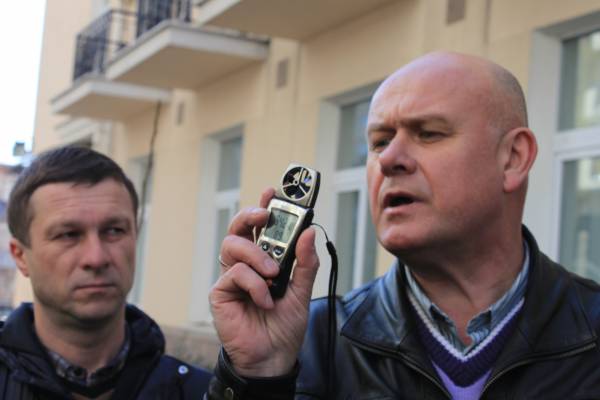
If the anemometer blow – spinning propeller, and the display immediately displays the information. Photo: Anton Kovalishin
Inspect the interior we started from the premises of the press center. Many readers of “Today” and journalists it is well known to held press conferences and Internet broadcasts. Immediately show the participants how to use a thermometer – another tool in the Arsenal of the energy audit, which helps to measure the temperature of surfaces of objects. A handy thing and much cheaper than a thermal imager. Maybe not visually, but effective to use. We direct a laser beam, for example, on the wall or the battery, and immediately know the temperature.
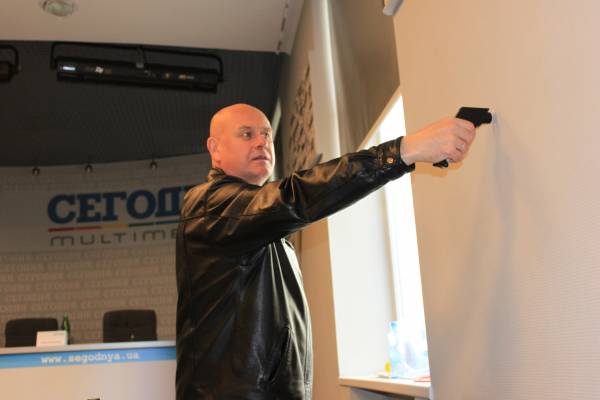
The temperature of the inner wall surface 23 degrees. Hot…
Check the batteries work. They work fine if all sections are about the same temperature. If any section of the cooler – the battery can be plugged with deposits from coolant. Then it should be cleaned. To understand, whether all is in order with batteries and everyone can, just touching her hand. You can poprikalyvatsya thermometer. If the top of battery warmer and colder at the bottom – this is normal, the battery gives off heat. Please note how the battery is installed – has the necessary clearance from the window sill, it does not cover the top of the battery, and it is not obstructed by furniture. The heat can freely spread in the room.

In the press center of “Today” with the battery full procedure
And in this corner we found something – a small “cold bridges”. The quality of insulation in this corner proved to be insufficient.
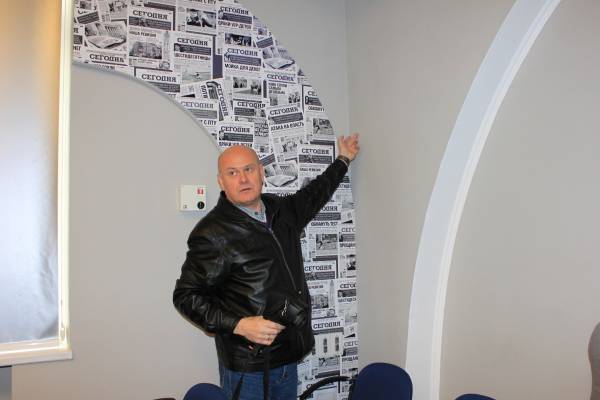
Here runs the Gcal!
“Cold bridge” is visible on the imager – here it is blue, the temperature is 17 degrees. While the rest of the wall red, warm, 23 degrees.
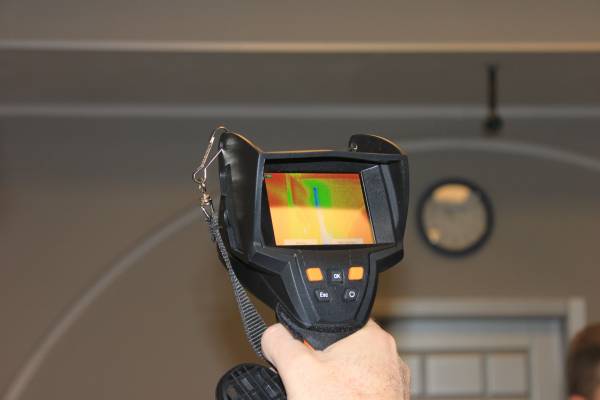
Overall the look is not critical. There are angles and much colder
But in the hall of the press center installed energy efficient LED bulbs. While the deputies think, whether to change in the session hall of the Verkhovna Rada of bulb with the LED, journalists have long at all has changed to more colorful and economical. And we were lucky to have a photo as a press center looked before the renovation. Very interesting to see “Before” and “After”.

Devastation, Soviet Wallpaper and old wiring. Photo: archive
Unfortunately, in the attic to get failed. Difficult stairs, all climbed up there and dusty. Therefore examined and discussed below. Usually, the attic and the roof is one of the biggest “eaters” gigacalories per building. It is important to insulate.
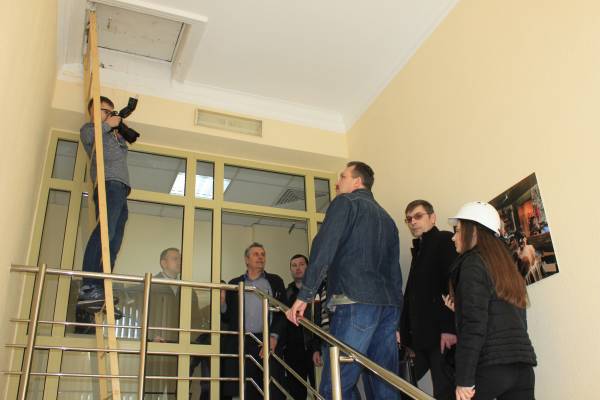
Danil Pavlov himself was eager to climb into the attic. Hardly dissuaded. Photo Anton Kovalishin
Imager thing impartial. As shown, it is. The attic was well insulated. How to tell the technologist, there is laid mineral wool.
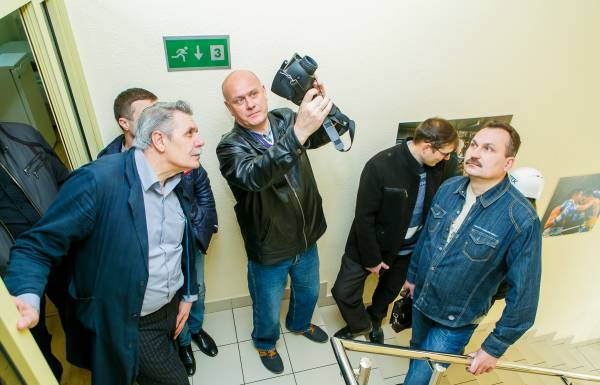
Here it is che, Sergey V., here it is che! Photo: Danil Pavlov
In the hallway to discuss the building’s ventilation system. It is here supply and exhaust automatic, designed for a large number of people. You need to check the ducts to see whether they cope with the task on such a area. Overall no complaints on it. Some places really leaking condensate, leaving red stains on the ceiling. The easiest way to check whether the exhaust system is to attach a sheet of paper. If the flow of air it held – so more or less normally. And if you fall you have to understand, to find reasons and solution. If people is stuffy – will be more tired, reduced productivity, some can be a headache.
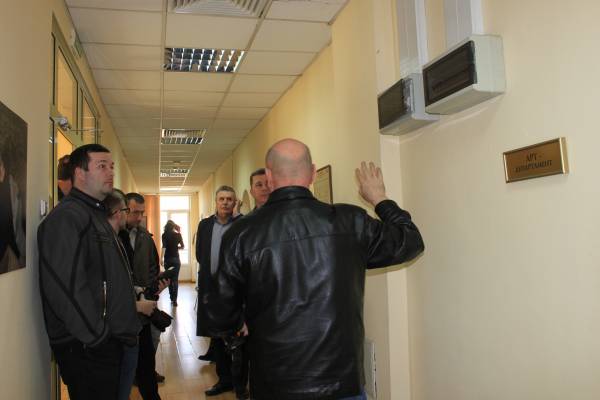
When the energy audit was also focused on switchboards and meters. Where there is no heating of the contacts and consequently additional energy loss helps to see the imager
And here, finally, and the solution of open Windows and balconies. Once in the basement, we looked at how the heating system of the building. A problem typical of many buildings – there is no possibility of automatic regulation of heat supply. Because of this, the building is overheating, people do not want to sit in the heat to 24-26 degrees and open the Windows. At this time, the heat meter house shakes Giga-calorie. And, it would seem that energy-efficient Windows, wall insulation and savings and no happiness.
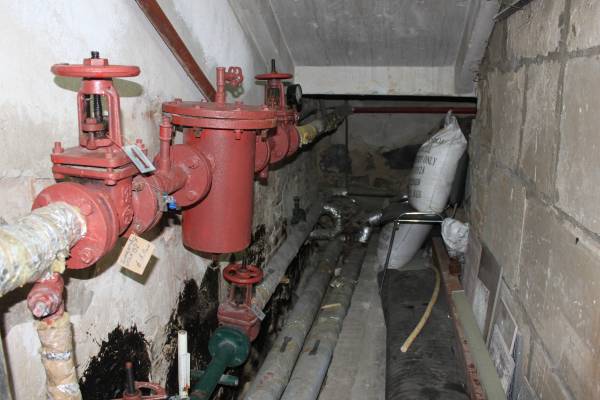
The temperature of the pipe thermometer shows 68 degrees. Because it’s hot in the basement, in Africa. Photo: Anton Kovalishin
Individual heating unit, which would automatically adjust the supply of heat in accordance with the weather outside, this building is worth about 250-300 thousand UAH. Help save 25% or more of heat, and therefore money. To pay off and so FORTH maybe 2-3 of the heating season. A very good investment. And journalists will feel more comfortable working. Another important recommendation is necessary to insulate the pipe which enters the coolant. Even every valve need to be isolated. And here’s the rule: the thickness of the insulation shall not be less than the inner diameter of the pipe itself.
Alexander Semenenko all recommendations take note of the list of energy efficient measures that will calculate when the “homework”. The participants then did not want to leave. Exchanged impressions and wished success in carrying out “homework” Alexander Semenenko. Here now all depends on him alone.
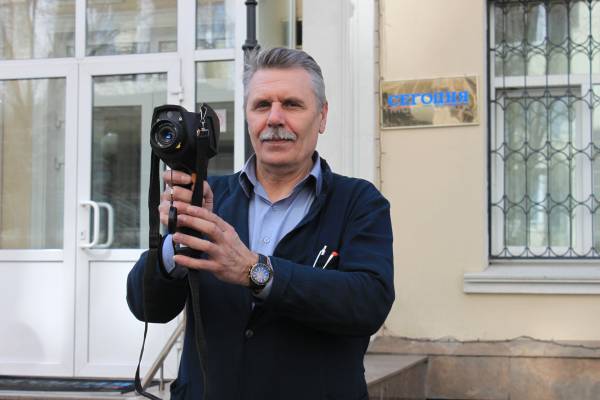
And for those who wants to learn how to conduct an energy audit, there is a good opportunity to get on the next training Principles to energoaudit of gitlevich Budivel, which will be held April 6-7. It is possible to register in the DTEK Academy or write to the author of this material Anton Kovalishin.
And here you can read about our other surveys:
“The potential is there!” examination of the two-storey building, 1957
“Energy audit: from the basement to the roof” – a survey of an apartment building.
“The communal revolution: how to “escape” from the huge tariffs” – the report from January’s training on energy audit.
Your questions and can write in the comments right here.
